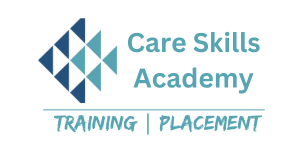In today’s technologically driven world, printed circuit boards (PCBs) are the backbone of most electronic devices. From smartphones and laptops to home appliances and industrial equipment, PCBs are present everywhere. With the increasing dependence on these devices, there is a growing demand for skilled professionals in PCB repairing. Whether you’re looking to start a career or upgrade your skills, learning PCB repair is a smart move. This blog will cover everything you need to know about PCB repairing and why it’s a valuable skill to acquire.
What is PCB Repairing?
PCB repairing involves diagnosing and fixing issues on printed circuit boards used in electronic devices. A PCB acts as the foundation of an electronic device, providing electrical connections between components. Repairing a PCB requires knowledge of circuit design, soldering, and the ability to identify faults in the board. With the right skills, you can fix minor issues or even refurbish a damaged PCB, saving costs and extending the life of electronic equipment.
Why is PCB Repairing Important?
- Cost-Effective: Replacing an entire PCB can be expensive, especially in complex electronics. Repairing the PCB is a more affordable solution, making it a cost-effective choice for both consumers and businesses.
- Environmental Impact: Electronic waste is a growing concern worldwide. By learning PCB repair, you contribute to reducing e-waste by fixing and reusing damaged boards instead of discarding them.
- Career Opportunities: The demand for PCB repair technicians is on the rise. With industries becoming more reliant on electronics, companies need skilled professionals to maintain and repair their devices.
- Versatile Skill Set: Knowledge of PCB repairing opens doors to various fields like electronics manufacturing, industrial automation, and consumer electronics servicing.
Key Skills Required for PCB Repairing
To excel in PCB repairing, there are several essential skills you should develop:
- Soldering and Desoldering: Mastery in soldering techniques is crucial. You need to be able to connect components to the PCB and remove them without causing damage.
- Troubleshooting and Diagnostics: Understanding how to diagnose issues on a PCB is the backbone of repair work. This involves using tools like multimeters, oscilloscopes, and diagnostic software to identify faults.
- Knowledge of Circuit Design: A solid understanding of how circuits work will help you analyze and trace issues on the PCB efficiently.
- Attention to Detail: Repairing PCBs requires precision and a keen eye for detail, as even a tiny error can render the board non-functional.
How to Get Started with PCB Repairing?
To start a career in PCB repairing, enrolling in a specialized course is highly recommended. These courses are designed to provide you with hands-on training, industry knowledge, and technical skills needed for effective PCB repair. Look for a course that covers topics like circuit analysis, soldering techniques, component testing, and troubleshooting.
Many training programs also offer certifications, which can be a valuable addition to your resume. Certification demonstrates your expertise and increases your chances of landing a job in this competitive field.
Tools and Equipment Needed for PCB Repairing
To work on PCB repairs, you’ll need a set of specialized tools, including:
- Soldering Iron: A tool for making connections between components and the PCB.
- Desoldering Pump: Used to remove solder from a connection.
- Multimeter: Essential for testing and measuring electrical values.
- Oscilloscope: Helps in analyzing electronic signals in the circuit.
- Magnifying Glass or Microscope: Useful for examining tiny components and detecting faults.
Career Prospects in PCB Repairing
The career opportunities for PCB repair technicians are vast and varied. With the rapid advancements in technology, companies in the fields of telecommunications, consumer electronics, automotive, aerospace, and industrial machinery are always on the lookout for skilled PCB repair professionals.
Freelancing is also an option if you prefer to work independently. Many technicians offer repair services to local businesses or individuals, providing flexibility and control over their work schedule.
Conclusion
PCB repairing is a valuable skill that offers immense career potential in today’s technology-driven landscape. Whether you’re interested in starting a new career, upgrading your skills, or reducing electronic waste, learning how to repair PCBs is a smart investment in your future. With the right training, tools, and dedication, you can become a proficient PCB repair technician, contributing to both economic and environmental sustainability.
If you’re ready to embark on this journey, consider enrolling in a PCB repairing course that offers hands-on training and certification. The knowledge and skills you gain will open the door to a rewarding career in the electronics industry.

